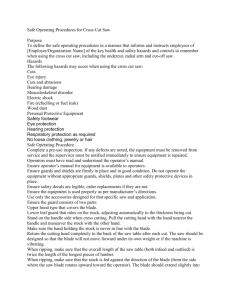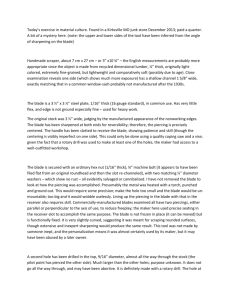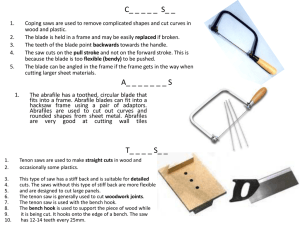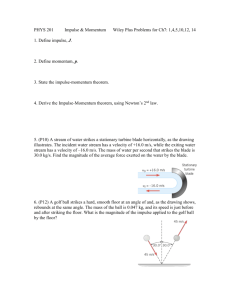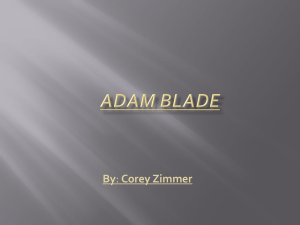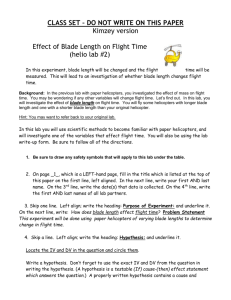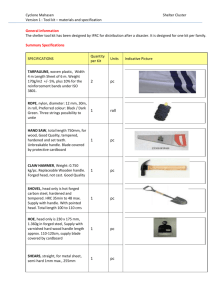Opening and Closing Basic Cataract Surgery Incisions
advertisement
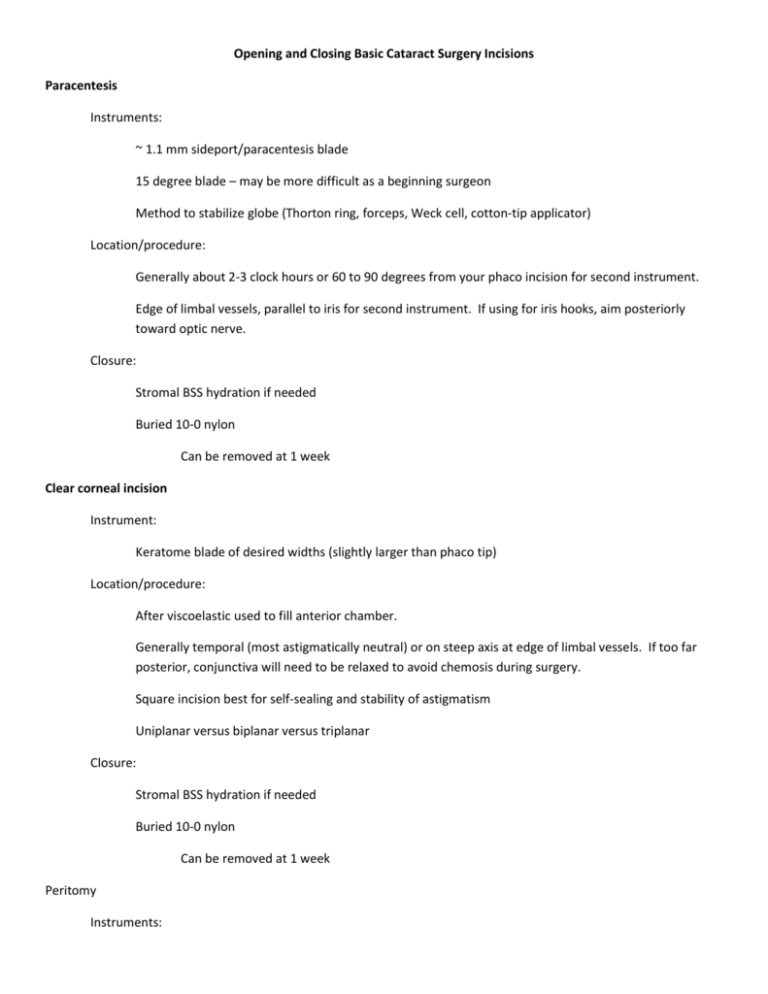
Opening and Closing Basic Cataract Surgery Incisions Paracentesis Instruments: ~ 1.1 mm sideport/paracentesis blade 15 degree blade – may be more difficult as a beginning surgeon Method to stabilize globe (Thorton ring, forceps, Weck cell, cotton-tip applicator) Location/procedure: Generally about 2-3 clock hours or 60 to 90 degrees from your phaco incision for second instrument. Edge of limbal vessels, parallel to iris for second instrument. If using for iris hooks, aim posteriorly toward optic nerve. Closure: Stromal BSS hydration if needed Buried 10-0 nylon Can be removed at 1 week Clear corneal incision Instrument: Keratome blade of desired widths (slightly larger than phaco tip) Location/procedure: After viscoelastic used to fill anterior chamber. Generally temporal (most astigmatically neutral) or on steep axis at edge of limbal vessels. If too far posterior, conjunctiva will need to be relaxed to avoid chemosis during surgery. Square incision best for self-sealing and stability of astigmatism Uniplanar versus biplanar versus triplanar Closure: Stromal BSS hydration if needed Buried 10-0 nylon Can be removed at 1 week Peritomy Instruments: Blunt Westcott scissors Forceps (ideally, non-toothed but 0.12 or Colibri generally OK) Location/procedure: At desired site of scleral tunnel (usually superior) Start with radial incision to bare sclera. Grasp both conjunctiva and Tenon’s fascia blunt dissect up to the limbus and 5-6 mm back from limbus. With one tine of scissor underneath Tenon’s and conjunctiva and the other on top, hug the limbus and cut. Closure: Buried 8-0 Vicryl or 9-0 nylon (latter can be removed at 1 week). Bipolar cautery Scleral Tunnel (extracapsular) Instruments: Crescent blade Keratome blade Location/procedure: Usually superior After peritomy and light scleral cautery. Mark desired width with calipers. Make initial groove of about 250 to 300 microns (sclera here around 800 microns) with crescent blade. Toe in with crescent blade and when at desired thickness (30%) flatten blade out and advance using circular movements to just past 1 mm limbal vessels. Extend incision horizontally using same circular motions to previous marks. Insert keratome blade, taking care to make sure it is in tunnel. Slide blade to extent of tunnel, dimple down, and enter anterior chamber parallel to iris. Closure: Hopefully self-sealing 10-0 nylon Resources: Cataract Surgery for Greenhorns (website) Achieving Excellence in Cataract Surgery (Colvard) – resident library BSCS lens and cataract book Chapters posted in Ophed


